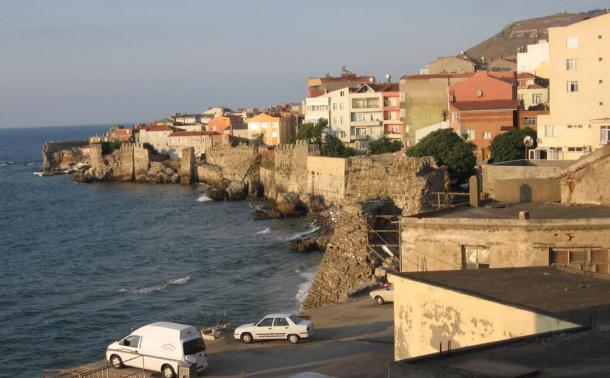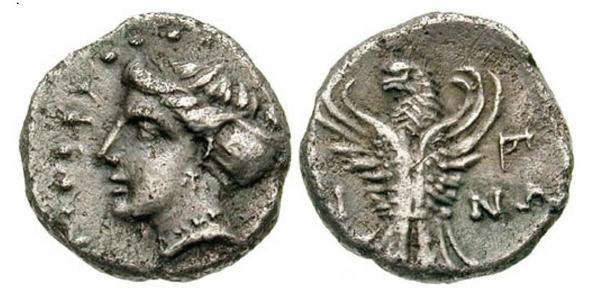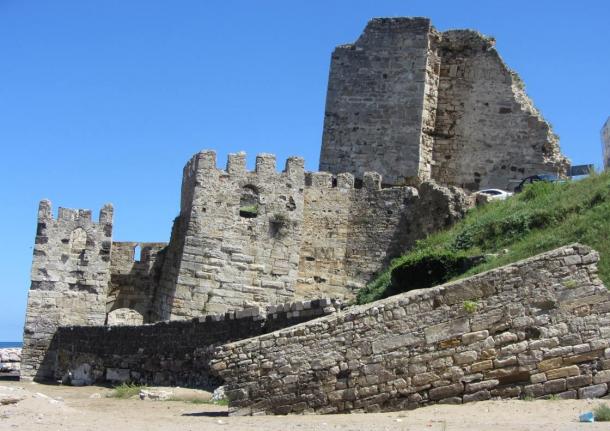
Remnants of ancient necropolis excavated in Black Sea city in Turkey
A necropolis is being excavated at a veritable crossroads of ancient civilizations, in Sinop, Turkey. Workers found remnants of the 4 th century BC city of the dead while building a culture center in the ancient city on the Black Sea.
The necropolis dates to the 4 th century BC, and many artifacts have been found, including amphorae, pottery, scent bottles and Greek coins.
Construction of the culture center has stopped while archaeologists excavate the necropolis, a word meaning “city of the dead.”
“We have also unearthed findings related to the Jewish faith in the west of the necropolis area. Works have been continuing,” said Sinop Museum Director Hüseyin Vura.
Sinop Governor Yasemin Özata Çetinkaya said finds like this are often made in Sinop as “the city is located on really historic land.”

A sea wall in modern Sinop (Photo by Aramgar/Wikimedia Commons)
“It is exciting that these valuables which have remained underground for 6,000 years are now being presented to humanity. When the excavations are done, the findings will be removed and the construction of the culture center will continue here. The findings will be displayed in the museum,” the governor said. “If it is approved, we can display these findings in an area in the culture center. Then the center will work as a natural museum. There are many examples of it in Turkey and the world. This is the most-preferred method.”
Sinop has a rich history of Turkish, Greek, Hittite and other peoples.
“According to legend, Sinope was founded by the Amazons, who named it for their queen, Sinova,” writes the Encyclopedia Britannica . “The city’s ancient inhabitants ascribed its foundation to Autolycus, a companion of Hercules. Destroyed by the wandering Cimmerians, it was refounded toward the end of the 7th century bce by a colony of Milesians. It ultimately became the most flourishing Greek settlement on the Euxine (Black) Sea. As a terminus of the trade routes from Upper Mesopotamia, it commanded much of the maritime trade of the Pontic region and by the 5th century bce had established many colonies on the coast and enjoyed naval supremacy in the Black Sea. In 183 bce it was taken by Pharnaces I and became the capital of the Pontic kings. Under Mithradates VI Eupator, who was born there (as was the 4th-century-bce founder of the Cynic sect, Diogenes), it enjoyed a high degree of prosperity and was embellished with fine buildings, naval arsenals, and well-built harbors. The Roman general Lucius Licinius Lucullus captured the seaport in 70bce, and the city was nearly destroyed by fire.”
Other ancient monuments and structures in Sinop include a ruined citadel that was reconstructed during the Seljuk and Byzantine eras, and from early Greece and Rome inscribed stones in walls and isolated columns

Greek coins like this one of Pontus have been found in the necropolis (Photo by CNG Coins/Wikimedia Commons)
Though people lived in the area long before recorded history, before the New Stone Age, scholars believe the city of Sinop was founded by Hittites, who gave it that name. From 1400 to 1200 BC the Hittites had one of the great civilizations, from Syria, to northern Mesopotamia to central Turkey.

A ruin at the coast of Sinop (Photo by Michael F. Schonitzer/Wikimedia Commons)
“Hittite culture survived in parts of Syria such as Carchemish which had once been under their power,” says the British Museum site. “These Neo-Hittites wrote Luwian, a language related to Hittite, using a hieroglyphic script. Many modern city names in Turkey are derived from their Hittite name, for example Sinop or Adana, showing the impact of Hittite culture in Anatolia.” Anatolia is another name for Asia Minor or western Turkey.
Featured image: A necropolis was found under land upon which a new culture center is being built in Sinop. (Hurriyet Daily News photo)
By Mark Miller















